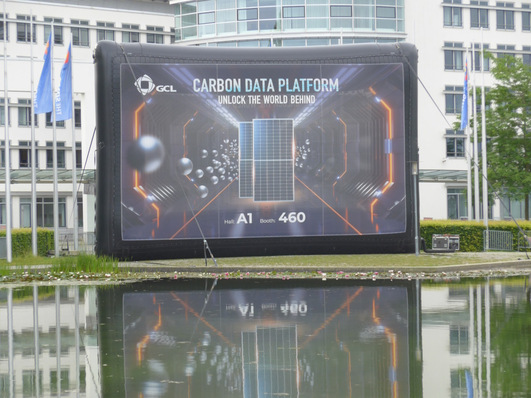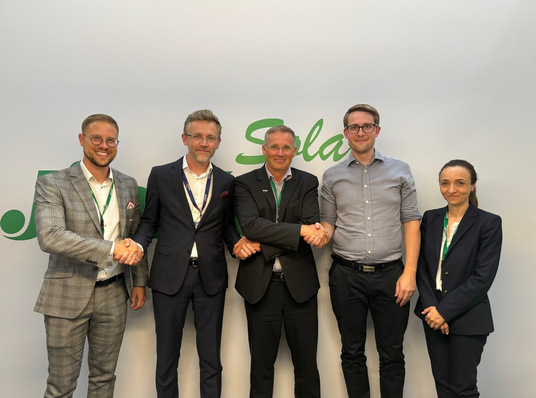Professor Powalla, what allows for such high efficiencies in crystalline solar cell and modules?
Thanks to its use in microelectronics, we have a good physical understanding of silicon as a semiconductor. There is a very advanced and well-developed process technology which gives us a good technological command of silicon. It starts with the cleaning of the raw material, the semiconductor unit, followed by crystal growth and ends with extremely sophisticated procedures for manufacturing the actual solar cells. An economy of scale has recently emerged which saves on costs through a certain volume of production and enables the optimization of specific products for solar cells such as printing pastes.
Where do you see potential for further increases in efficiency?
If we think about crystalline silicon solar cells, focusing solely on the material physics doesn’t offer much room for improvement. However, there are other ways to improve efficiency through the use of more complex cell technologies. I think the module itself offers more opportunities with better prospects, and it is easier to put improvements in efficiency into action. But we aren’t all that far away from the theoretical efficiency limit.
Efficiency is not the only optimization criterion – electricity production costs also play a role here. These costs are not exclusively dependent on the efficiency, rather, they are primarily determined by the total yield of the system. This is particularly true for cells and modules where the “invoice amount” is ultimately influenced by the characteristics in partial load operation, the spectral or angle-dependent properties of the module, and the temperature coefficient. In the same vein, an efficient and reliable systems technology is also key.
What efficiency levels can this achieve, not only theoretically but also practically?
The theoretical thermodynamic limit which cannot be exceeded using crystalline silicon cells is the result of the inability to use the entire spectrum of sunlight as well as inevitable physical losses, such as radiative recombination and the Auger recombination. On the basis of the solar radiation here on Earth, a single silicon cell would yield a practical value of approximately 28.5 percent efficiency without any light concentration.
Perovskite solar cells and half-cut cells are a current hot topic when it comes to increasing efficiency. What advantages and disadvantages do these cell types offer?
Perovskite solar cells and half-cut cells are two completely different things. Over the last five years, perovskite solar cells have experienced unbelievable development. As far as I know, no other material has ever made such dramatic increases in efficiency each year. The smallest cells have recorded extremely high efficiency levels of 23 percent, which is clearly the advantage of these cells. Another advantage is based on the fact that perovskite solar cells can be used to make relatively simple cells with a high band gap, and these semitransparent cells can then function as tandem partners for silicon cells or copper indium gallium selenide (CIGS) cells. In comparison to silicon cells, perovskites are relatively cost-efficient and simple to produce.
We are in the laboratory stage of development for the perovskite cells. At the moment, our highest efficiencies are being achieved in the square millimeter range, or at least smaller than the square centimeter range. We haven’t yet been able to scale it up at all, so we can’t make any reliable predictions concerning stability and long-lasting efficiency. The use of toxic materials in perovskite doesn’t speak for the cells, though these materials can be replaced. Nonetheless, research is working on promising solutions.
To produce half-cut cells, silicon wafers are cut in half and connected in series. The benefit of this is that the electrical current density remains low, thereby minimizing ohmic losses, positively affecting the module’s efficiency. And the module still has considerable potential for development. The need to halve the cells is undoubtedly a disadvantage of this technology. It poses a potential risk as it can cause fractures and short circuits at the interface, and it requires more soldered connections which increases the possibility of error and generates additional costs. Of course, this is a field where automation can significantly lower the rate of error. In addition to half-cut cells, bifacial cells, where the rear side is also light-sensitive, are also opening up opportunities for generating higher yields.
What significance will multi-junction solar cells have in the future?
I think the development of so-called tandem solar cells and multispectral cells shows great potential. Perovskite solar cells can be easily combined with silicon or CIGS cells, which can further boost efficiency. Increasing efficiency is so important because it has an enormous influence on the total costs incurred by simultaneous reductions in surface area, cables, required working time etc. In addition, the cells should demonstrate technological maturity and stability, and pass a field test in realistic conditions.
In your opinion, which approaches in thin layer technology show considerable potential?
In my opinion, CIGS technologies, cadmium telluride (CdTe) technology and perovskite technology have a lot to offer in terms of lowering electricity production costs. In the intermediate term, I see real potential in perovskite-CIGS tandem solar cells. The upscaling of CIGS technology is currently developing at a breathtaking pace. Before long, new production facilities will be brought into service with the result that highly efficient and cost-effective modules will come onto the market in the near future, opening up competitive solutions for the energy market as well as for building integration. CIGS technologies also have a considerably shorter energy payback times than conventional silicon modules.
It is one thing to develop efficient cell concepts, but integrating them into production processes is another thing. Which factors play a role in this?
First of all, reliable processes must be developed in the laboratory and the process window must allow large areas to be covered when it is scaled up. Then it comes down to the productivity parameters which have to be achieved, such as plant throughput, yield or material costs. This requires a certain level of automation, which opens up opportunities to further develop and utilize concepts such as those envisaged in Industry 4.0. As far as technical expertise in Germany and particularly in Baden-Württemberg is concerned, for instance in mechanical engineering, I think we can make a sizable and significant contribution to industrial maturity and ultimately to global production. (HCN)
The interview was conducted by experts of Intersolar Europe.
Stay informed, get our free newsletter twice a week. Register here
Join our pv Guided Tours at The smarter E Europe 2019 (Intersolar Europe, ees Europe, Power2Drive, EM-Power), register here







